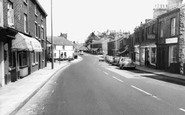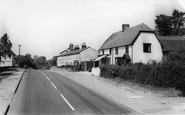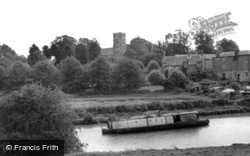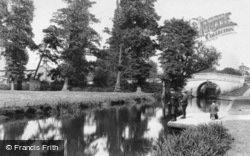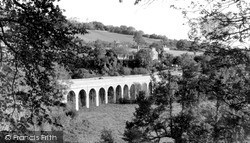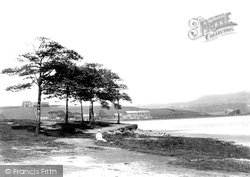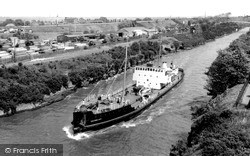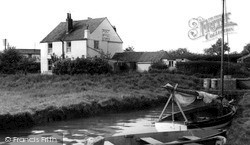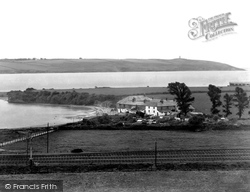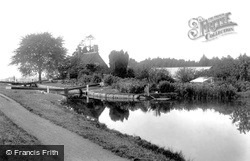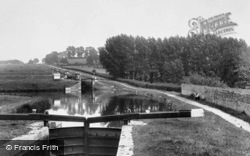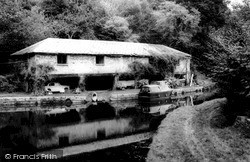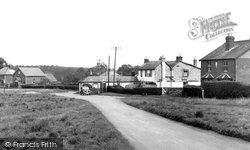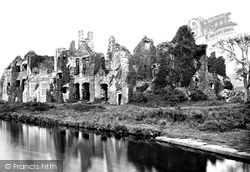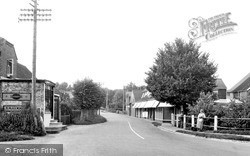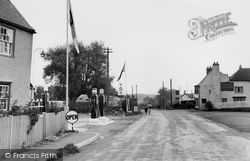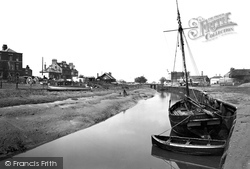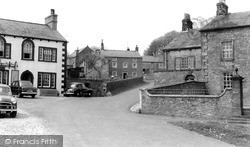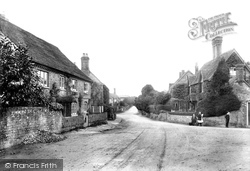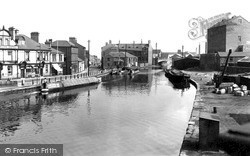Merry Christmas & Happy New Year!
Christmas Deliveries: If you placed an order on or before midday on Friday 19th December for Christmas delivery it was despatched before the Royal Mail or Parcel Force deadline and therefore should be received in time for Christmas. Orders placed after midday on Friday 19th December will be delivered in the New Year.
Please Note: Our offices and factory are now closed until Monday 5th January when we will be pleased to deal with any queries that have arisen during the holiday period.
During the holiday our Gift Cards may still be ordered for any last minute orders and will be sent automatically by email direct to your recipient - see here: Gift Cards
Photos
2 photos found. Showing results 441 to 2.
Maps
31 maps found.
Books
2 books found. Showing results 529 to 2.
Memories
639 memories found. Showing results 221 to 230.
Dynea, Glamorgan Canal
Can anyone remember upper and lower boat? I was told that my grandparents lived in the lock keepers cottage at Dynea and I know my grandmother Dora Bateman/Jones was born in Pencoed with the rest of her ...Read more
A memory of Rhydyfelin by
Rip
I remember the day very well my dad woke us all up to tell us we would have to leave our house .. We lived @ no1 Daniel adamson ave as I looked out of my bedroom window to the right . Usually I could see over the ship canal . But all that I I ...Read more
A memory of Irlam by
Family Woodward And Bellamy
I have ancesters in Lapworth from about early 1800s living at Windmill Farm, Canal House and Tapster Brook House where they Farmed. Family names where Woodward and Bellamy. Any Bellamys still in the area ? June Tomes.
A memory of Lapworth in 1880 by
Crabtree's Farm
I wasn't born in Disley. My Grandparents built a little wooden bungalow in a field owned by the Crabtree family. It was built before the war for holidays. Before that they had a big tent and all their family would go to stay. During ...Read more
A memory of Disley in 1950 by
Father's House!
My Father, John (Jack) Lovelock lived in Weaver's Cottages, he learnt to swim in the K & A Canal alongside. We used to walk past the large detached house towards the end of the towpath you can see and there were always budgies in a cage/aviary there in the 1960's.
A memory of Newbury by
Upper Heyford School
My father was stationed at RAF Upper Heyford 1949 to 1953. My brothers, Peter, Michael and myself, Mary, went to the village school. My older brother Richard went to school in Steeple Aston. I remember the ...Read more
A memory of Upper Heyford in 1949 by
The Village Shop
I walked to and from school past the village shop known as "Greens". the walk to school was approximately three quarters of a mile which we often did unaccompanied. As we climbed the steep, to us, hill up to the ...Read more
A memory of Little Hallingbury in 1963
Hollingwood Top (Mount Pud)
I have now done some detective work regarding the origin of the Tip that we knew as Mount Pud, which was located between Station Road and the canal. It was obviously some kind of industrial waste dump but, as there ...Read more
A memory of Hollingwood in 1947 by
Broad Oak Street
I was born in 1949 and then spent the next 15 years living there or visiting my grandparents in Broad Oak Street. The house in Broad Oak Street forms a part of my identity. I remember every nook and cranny - the coal cellar ...Read more
A memory of Nottingham in 1952 by
Banbury Street And Price's Candle Factory
From the end of WWII until Sept 1957, my parents rented rooms in one of the houses in Banbury St that still stands. I was five when we moved to Surrey but have vivid memories of the house. I remember the ...Read more
A memory of Battersea by
Captions
756 captions found. Showing results 529 to 552.
In the foreground is the Grand Union Canal, with the houses of Blisworth and the 15th-century tower of the church to be seen on the opposite bank.
Here, children are trying their luck at fishing in the Aylesbury Arm of the Grand Union Canal. Just beyond the bridge is the delightfully named Hills and Partridges Lock.
Three hundred yards further north is Rennie's 1805 Dundas Aqueduct carrying the canal across the River Avon.
Castleton developed largely because of its proximity to the canal and railway, making it suitable for mill building.
They not only provided the post office, but also newspapers and the posters outside kept the locals abreast of events both national and local; sweets, chocolates, tinned foods, candles and basic
It was this canal, financed by the Duke of Bridgewater and built in 1761 by James Brindley, that was to bring about a complete change in the transportation of industrial materials and manufactured goods
Timber was a major commodity carried on the canal; it was used not only by the building industry, but also in the manufacture of paper and cardboard, then a major Warrington industry.
A modern mini-market now houses Stokesby Post Office, and the building shown here has become a candle maker's workshop and a tearoom with a charming garden beside the river.
A candle manufactory stood on this side of the harbour at Par. Across the bay is the distinctive daymark on Gribbin Head.
From there, the Kennet & Avon Canal plunges down the extraordinary flight of 29 locks at Caen Hill to the valley below.
These locks are so close together that in order to maintain a satisfactory supply of water, it was necessary to extend the canal at the left-hand side above each chamber.
It was once an iron-ore warehouse from which the ore was loaded onto canal boats and shipped on to local ironworks. There is still some evidence of this traffic in the form of tramlines.
This is a reference to the Salisbury Canal, an ambitious navigation intended to link the cathedral city with Southampton; however, the scheme was never completed.
The marina was originally a reservoir to maintain levels in the Grand Union Canal; it was also used as a pound to moor working boats. Water was pumped from here up to the top lock.
Set on the banks of the Tennant Canal, the Abbey was founded in 1130 by the Norman baron Richard de Granville. John Leland, in the 16th century, described the abbey as 'the fairest in all Wales'.
Loxwood is on the route of the partly-restored Wey and Arun canal near the Surrey border—'London's lost route to the sea'.The shop on the left has old enamelled metal cigarette advertising signs fixed
Set on the banks of the Tennant Canal, the Abbey was founded in 1130 by the Norman baron Richard de Granville. In the 16th century, John Leland described the abbey as 'the fairest in all Wales'.
Some fifty years later it was illuminated by lanterns and candles in the evenings, and was described as 'one of the finest pieces of floral artistry in the Kingdom'. Some elements of it still remain.
been at the centre of various speculative transport schemes: there was once talk of an Islington-Wallasea railway passing this way, as well as plans to link the village to Purfleet and Battlesbridge by canal
In the interest of national security this was counteracted when the Royal Military Canal was built as a defence against Napoleon in 1807, linking the Rother with Hythe.
The women baked bread, washed clothes, used carved spoons made of sycamore wood (it did not stain), cared for children and eagerly awaited the weekly carrier's cart to replenish their stocks of candles
Loxwood is on the route of the partly-restored Wey and Arun canal near the Surrey border—'London's lost route to the sea'.The shop on the left has old enamelled metal cigarette advertising signs fixed
The Bridgewater Canal was built solely for the transportation of freight but so many people came to see it that a passenger service was soon started between Warrington and Manchester.
The Frome Valley, dotted with mills and with the Thames and Severn Canal running through it, has long been a centre of industry. Chalford itself stands on the steep north bank.
Places (1)
Photos (2)
Memories (639)
Books (2)
Maps (31)

